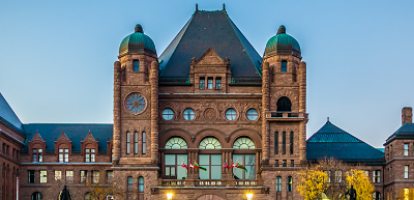From: William Robson
To: Canada's Health Ministers
Date: December 20, 2016
Re: Setbacks in the Struggle to Constrain Provincial Healthcare Budgets
The 2016 release of the Canadian Institute for Health Information’s National Health Expenditures (NHEX) database contained two items of disquieting news, one immediately noticeable, the other getting less attention than it should.
More noticeable was the uptick in growth in the preliminary estimate for provincial and territorial government healthcare spending in 2016. Not a huge number – up 2.3 percent from 2015. But it broke an eight-year declining trend – a trend that had observers proclaiming that Canadian governments had “bent the cost curve” in healthcare down.
The less obvious bad news requires a closer look at the data from earlier years. The NHEX’s preliminary estimates are based on provincial and territorial budgets. They get revised later as actual numbers become available. Comparing the preliminary numbers to the revised numbers in successive NHEX reports reveals that the revised numbers typically show materially faster growth than the preliminary ones.
From 1998 to 2011, actual provincial/territorial healthcare spending (the gold bars in the figure) grew, on average, 7.0 percent annually – well ahead of Canada’s long-term potential economic growth. The revised numbers to 2015 confirm deceleration to a growth rate below 3 percent since then – much less of a challenge to fiscal sustainability.
What is disquieting, however, is how consistently each year’s preliminary figures (the dark blue bars) have understated the growth rates recorded in the final numbers (the light blue bars show the difference). Between 1998 and 2011, final growth rates averaged 0.9 percent above preliminary ones. And while 2012 and 2013 were exceptions, 2014 and 2015 marked a return to 0.9 percent average overshoots.
An overshoot of 0.9 percent in one jurisdiction in one year would be no big deal. But the final numbers exceeded the preliminary ones on average in every Canadian province and territory over the 1998-2015 period. Overshoots that big year after year affect judgements about fiscal sustainability, and can mean the difference between balanced budgets on the one hand, and chronic deficits and tax hikes on the other.
The fact that all jurisdictions are overshooting their budget targets suggests a fundamental problem with either fiscal projections, or fiscal discipline, or both. More realistic revenue projections and better scrutiny of in-year spending can help hold healthcare spending increases in line with Canadians’ long-term ability to pay. Without them, preliminary numbers showing subdued healthcare spending are too much wishful thinking, and not enough reality.
William Robson is President and Chief Executive Officer at the C.D. Howe Institute
To send a comment or leave feedback, email us at blog@cdhowe.org.






